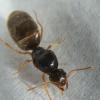- Formiculture.com
- Forums
- Gallery
- Members
- Member Map
- Chat

Pheidole Californicus keeping Questions (New Ant Keeper need of knowledge)
Started By
Josh.Antlover
, Feb 29 2020 1:40 PM
3 replies to this topic
#1
 Offline
-
Posted February 29 2020 - 1:40 PM
Offline
-
Posted February 29 2020 - 1:40 PM
Hey Everyone, I just got a colony of Pheidole Californicus. I’m wondering if this little guys are fast growing or slow? Let’s say... how many workers can my colony have after 2-3 months?.... So far I have 2 Queens and around 50 or less workers with eggs. Thank you
#2
 Offline
-
Posted February 29 2020 - 4:17 PM
Offline
-
Posted February 29 2020 - 4:17 PM
Don't know that much about the species, yet I don't Pheidole growth is that fast, although not slow, either. In two or three months you just might have a 50% population increase, but I'm just guessing.
"God made..... all the creatures that move along the ground according to their kinds (including ants). And God saw that it was good. Genesis 1:25 NIV version
Keeping:
Formica cf. pallidefulva, cf. incerta, cf. argentea
Formica cf. aserva, cf. subintegra
Myrmica sp.
Lasius neoniger, brevicornis
#3
 Offline
-
Posted February 29 2020 - 4:47 PM
Offline
-
Posted February 29 2020 - 4:47 PM
It is nearly impossible to very accurately estimate growth in an ant colony, particularly in a captive environment. Everybody feeds different foods, keeps their ants at different temperatures, checks on them a different amount of times, etc. My point is that there's just so many variables.
Keep almost any ants warm and well fed and their growth will be fairly fast.
Currently Keeping:
Trachymyrmex septentrionalis
Pheidole pilifera
Forelius sp. (Monogynous, bicolored) "Midwestern Forelius"
Crematogaster cerasi
Pheidole bicarinata
Aphaenogaster rudis
Camponotus chromaiodes
Formica sp. (microgena species)
Nylanderia cf. arenivega
#4
 Offline
-
Posted February 29 2020 - 4:51 PM
Offline
-
Posted February 29 2020 - 4:51 PM
*Pheidole californica. Don't worry. Common mistake. There is no such thing as Pheidole californicus. There is Pogonomyrmex californicus though. I would treat them like any other small ant.
- RushmoreAnts likes this
Hi there! I went on a 6 month or so hiatus, in part due, and in part cause of the death of my colonies.
However, I went back to the Sierras, and restarted my collection, which is now as follows:
Aphaenogaster uinta, Camponotus vicinus, Camponotus modoc, Formica cf. aserva, Formica cf. micropthalma, Formica cf. manni, Formica subpolita, Formica cf. subaenescens, Lasius americanus, Manica invidia, Pogonomyrmex salinus, Pogonomyrmex sp. 1, Solenopsis validiuscula, & Solenopsis sp. 3 (new Sierra variant).
1 user(s) are reading this topic
0 members, 1 guests, 0 anonymous users

















